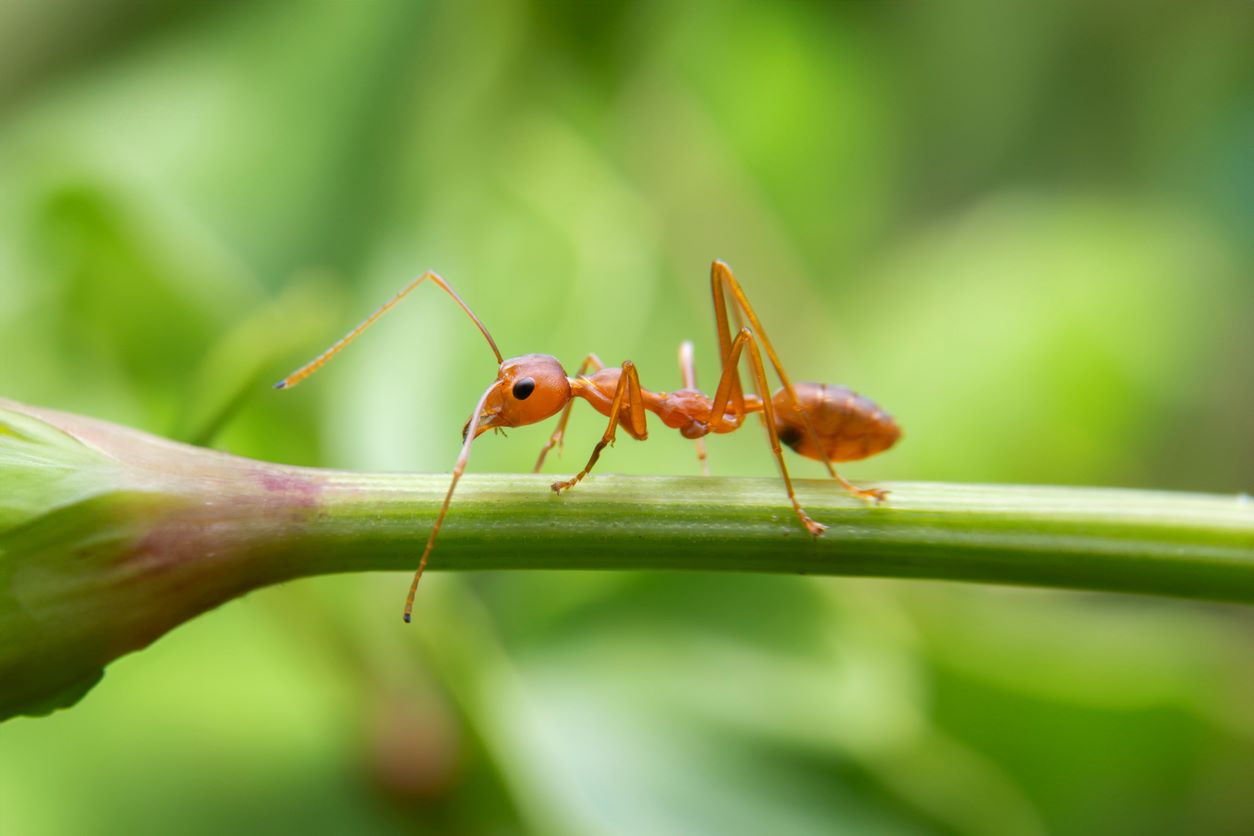Whether working out in the yard or merely minding your own business, nobody should be subjected to the intense pain and symptoms from a fire ant sting. These aggressive pests are much more than a nuisance for people who are allergic to the sting.
It’s paramount that you get the correct information on howbest to treat a fire ant bite. Allow our Dewey Pest and Termite Control team to provide tips and remedies for treating fire ant bites.
What Are Fire Ants?
Fire ants are a type of ant found throughout the United States, including California. Among the most aggressive ant species, fire ants are known for their ability to leave venomous stings that can lead to a wide range of health hazards and concerns. Fire ants typically range between one-sixteenth and one-fourth of an inch in size. Due to their small size, distinguishing fire ants from other species can be challenging.
What Does a Fire Ant Bite Look Like?
The experience of getting a fire ant sting comes in stages, with the first stage being a burning or stinging sensation. Within an hour, itchy bumps will start to develop. As several hours pass, blisters could develop where those bumps are located, and these blisters tend to be incredibly itchy. Around a day or so later, blisters will start to fill with white or yellow pus-like fluid. These blisters typically go away after seven to 10 days if not irritated.
Fire Ant Bite Symptoms
So, what’s the big concern with having a fire ant bite? According to the University of Florida, several symptoms and health concerns can come with a fire ant sting, especially for those who are allergic to the sting. These fire ant bite symptoms include the following.
- The area of the sting is likely to swell and itch
- Stomach cramps, diarrhea, nausea and vomiting
- Tightness in the chest and difficulty breathing
- Swelling of the tongue and throat, along with hoarseness

Fire Ant Sting First Aid Tips
Recognizing the dangers of a fire ant bite, it’s in your best interest to apply fire ant bite relief promptly if you think or know you have been bit or stung. With immediate action, you have better odds of minimizing symptoms and the risk of symptoms advancing.
Here are four tips and practices you can use to provide proper home treatments for your fire ant sting:
1. Wash Affected Area
If you spot a fire ant bite on your body, thoroughly wash that affected area. We recommend using soap and cold water to relieve the most swelling and stinging sensation.
2. Apply Cream on Affected Skin
Once dry, apply hydrocortisone cream onto the affected skin. This will help provide additional relief against swelling and itchiness. For adequate protection, apply hydrocortisone cream twice daily until the rash disappears. We recommend you use once in the morning and again in the late afternoon or evening.
3. Utilize Cold Compresses
For additional pain relief, apply cold compresses, such as ice packs, to the affected area. Try to use cold compression for 20-minute sessions, with at least 20 minutes between sessions.
4. Take an Oral Antihistamine Medication
Consider taking oral antihistamine medication to help further control itchiness and irritation. Zyrtec, Benadryl, and Allegra are common antihistamine medications for fire ant bite relief.
Additional Resources for Fire Ant Sting Relief
These tips and best practices can help relieve a lot of the pressure and pain of a fire ant sting. Yet some reactions, such as loss of consciousness or anaphylaxis, cannot be resolved with simple home remedies. If you or a loved one needs additional attention, contact professional medical help immediately.
Practices for Fire Ant Prevention
Although the thought of getting a fire ant bite can be overwhelming, there are ways you can best avoid fire ants from getting onto your property in the first place. From your humble abode to your commercial space, take advantage of these best practices to help keep your fire ant exposure to a minimum.
- Clean up any food spills or residue
- Keep all food sealed away
- Fix any water leaks as soon as possible
- Remove lumber and additional debris to prevent nesting
However, while these preventive measures can help, there are other fire ant prevention or removal solutions. For the best results, it’s best to turn to the pros. The best professional pest control services will supply you with top-tier technicians who will get right down to the root of your infestation and determine a specialized treatment to help keep fire ants out.
Eliminate Fire Ants with Dewey Pest and Termite Control
There’s no better team to turn to for professional ant control for professional ant control than Dewey Pest and Termite Control. With service branches across California, our technicians are up to the challenge of controlling your ant infestation. The answer has never been so clear with our residential services and commercial services.
Contact our team online to request our California ant control services toda


